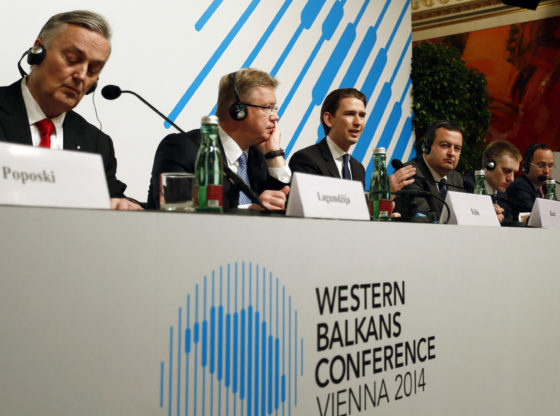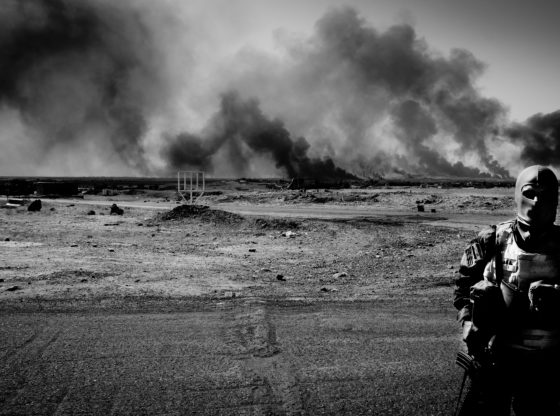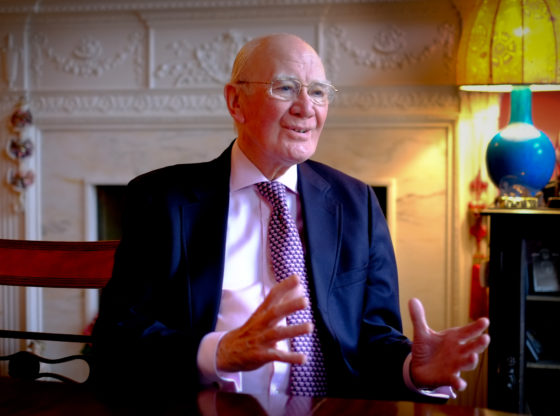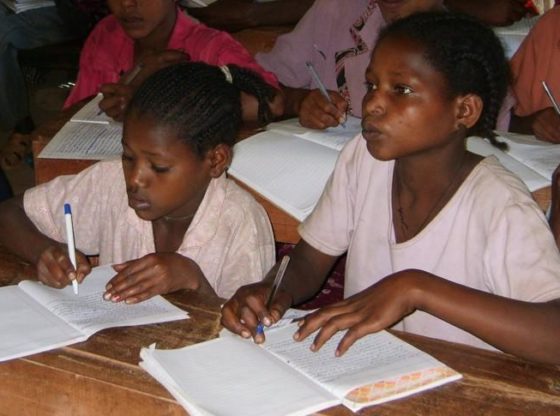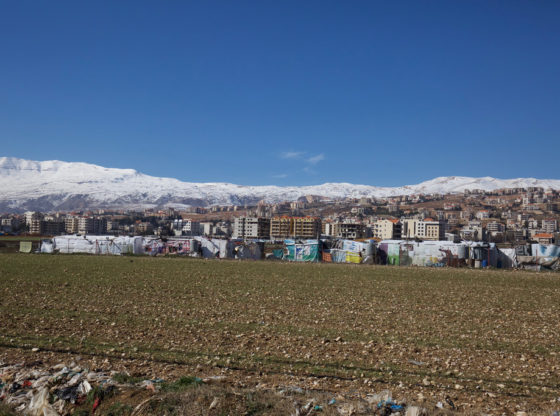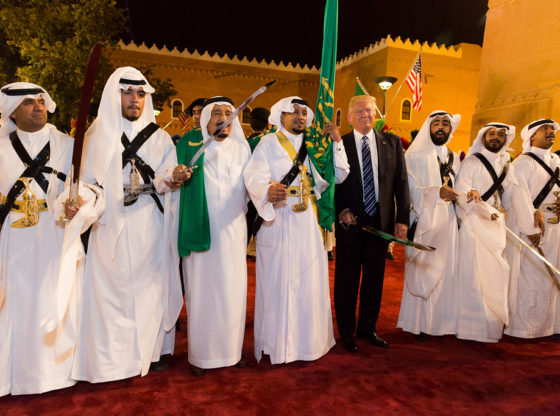As Mercy Corps Director from 2013 to 2016, Rae McGrath was responsible for the transfer of food and aid from Turkey into North Syria. Here, he draws on over 30 years’ experience to reflect upon how Syria’s complex war may force a rethink of standard humanitarian practice.
Much of what has been written about the humanitarian response to the war in Syria has been inaccurate, condemnatory, even misleadingly generalised. Much of this criticism has come from sources who have been well-placed to recognise the ground-breaking and positive nature of the humanitarian work being undertaken across Syria. I say this as someone with over 30 years’ experience as a field responder. As director of Mercy Corps’ cross-border operations from Turkey into Syria between 2013 and 2016, I was repeatedly struck by the fact that what was being written about Syria’s humanitarian operations reflected little of our experiences on the ground. I feel it is necessary to address the misconceptions which have underpinned much of this commentary. There are, in fact, many positive lessons to be learned from the humanitarian operations undertaken during those years in Northern Syria.
Our experience has also demonstrated the need to re-examine aspects of what the United Nations Office of the Coordination of Humanitarian Affairs (UNOCHA) refers to as the ‘humanitarian architecture’, and the relevance of this ‘architecture’ to the reality of conducting humanitarian operations in theatres of asymmetric warfare. Here, there are both positive and negative lessons to take from the humanitarian work undertaken in Syria. The key lesson to draw, in my opinion, is that the cooperation currently favoured by UNOCHA and other agencies is not adequate. Ensuring an effective response to the humanitarian needs of civilians trapped in fluid and fast-changing conflict will require some new thinking.
SYRIA’S SPIRALLING CONFLICT
By mid-2012, the Syrian government position on humanitarian operations was clear – it would forcibly oppose any foreign assistance to non-combatants that did not fall under its control. In practice, this policy sought to confine the delivery of humanitarian aid almost entirely to government-controlled areas. The Syrian Arab Red Crescent (SARC) did its best to maintain a food pipeline to civilian communities inhabiting areas controlled by opposition forces but supply became increasingly sporadic during 2013, falling well short of requirement. Damascus-based World Food Programme was unable to gain access to conduct assessments or to monitor distributions as it could only distribute food through SARC. These restrictions, and more, were felt by other international humanitarian NGOs based in Damascus.

As the war intensified, the northern governorates bordering Turkey, Idlib, and Aleppo fell under the control of, or were heavily contested by, opposition forces. The United Nations (UN) took the view that it needed a Security Council resolution to deliver cross-border aid as permission from the Syrian government was not forthcoming. However, Mercy Corps, along with other International Non-Governmental Organisations (INGOs), took the view that the Syrian government’s stance was arbitrary and in breach of international humanitarian law (IHL). This decision was contentious since international law on this issue is unclear. Although states may not arbitrarily withhold consent, this does not in itself make it legal for a humanitarian agency to implement cross-border operations. However, as is often the case in such situations, the humanitarian imperative provided a less difficult calculation based on a number of unarguable facts:
- The areas with the greatest needs in the north were not under the control of the Syrian Government. Mercy Corps and other INGOs were confident of their ability to negotiate humanitarian access with most armed Parties to the Conflict.
- The Turkish government would not block, and were even supportive of, movement of cross-border aid into Syria.
- The plight of civilians in the north was becoming increasingly desperate. The population was multiplying daily due to the influx of displaced people fleeing conflict, mostly from attacks by Syrian government forces and its allies in other parts of the country.
From the perspective of Mercy Corps, our response logic was straightforward. By providing life-sustaining supplies of food, water, and other essential commodities, we allowed civilians the continuing freedom to decide whether to stay in their country or to leave as refugees to Turkey. A counter-argument made by some was that by providing humanitarian assistance to civilians in opposition areas, we were giving succour to the opposition forces and/or prolonging the war. These arguments are not new. They have often been raised in response to humanitarian operations in conflict. Another argument is that governmental donors have multiple agendas, providing humanitarian assistance while arming, training, or otherwise supporting parties to the conflict. No serious professional humanitarian responder can have failed to struggle with the many contradictory and morally complex issues that surround the provision of aid during a war. The first principle of the Humanitarian Charter is to avoid causing harm. Yet I would argue that that this principle, although worthy, is hugely ambiguous. Given the challenges of contemporary warfare, it can easily present an impenetrable web to governments and agencies, leading them down a false trail.

Faced with civilians trapped within a war-zone, there will come a time when their survival becomes the paramount consideration. If no effective external assistance is launched, the ability of civilians to feed children, the elderly, the disabled, and the injured will deteriorate quickly. Options are reduced incrementally. The community, regardless of the self-help mechanisms that almost always exist, will simply not be able to respond to the growing need. This point was reached in many towns and villages in northern Syria by mid-2013. I would argue that international organisations with the capacity to respond, but who don’t, leave civilian communities open to harm. There will always be counter-arguments to direct response. Most will be risk-related. Some may reflect concerns regarding legal exposure. These are valid concerns and present tough choices. But surely they are policy decisions made in principle at Director and Board level when an organisation identifies itself as a conflict responder?
LESSONS FROM SYRIA
Decisions that need to be made in relation to a new conflict environment are specific to that environment. My experience is that too many INGO’s are not confident of their status in regard to modern conflict. They rely too much on external guidance, encouragement or pressure from major donors, peer agencies, affected community representatives or perceived public pressure reflected in the media. Syria’s war has shone a powerful spotlight on the importance of organisational skill sets: the experience of operating in insecure, low-intensity or post-conflict environments are not qualifications to operate effectively in a hot conflict. Nor do they equip organisations with the ability to negotiate the delivery of aid across asymmetric battlefields. In Syria, where the civil war has spawned multiple combatant armies and militias, domestic and international, with overlapping and shifting objectives, even defining the conflict is difficult. The complexity of Syria’s asymmetric war has provided lessons that must be recognised and understood by humanitarian organisations. Some of the most critical are explained below.
THE NEED FOR TRUST
The UN was committed to engaging with the Syrian government as the lawful power when it was, simultaneously, a party to the conflict. The contradictions inherent in such an arrangement are easy to see. For the humanitarian agencies operating in opposition-controlled areas, the key consequence of this was a breakdown of trust. The role of the United Nations in conflicts requires broad-based trust – it must be perceived by all sides as impartial. For Syrians being targeted by government forces it was difficult to understand, or trust, the UN’s position. For agencies working in opposition-controlled areas, coordination with the UN was also negatively impacted by the position it chose to adopt.
FLEXIBLE RESPONSE
As I explain below, delivering aid across complex and shifting battlegrounds requires a level of flexibility in planning, coordination, and response far greater than in ‘normal’ humanitarian operations. Slow and bureaucratic structures simply do not match the needs on the ground. In the case of Syria, the coordination and joint planning mechanisms, sometimes referred to as the humanitarian architecture, failed to properly achieve its objectives – especially in relation to cross-border operations from Turkey. Far from bringing together UNOCHA, the UN Agencies, the implementing INGOs, and Syrian NGOs, the structure was over-bureaucratic with key decisions invested in a few UN individuals. The system proved institutionally incapable or unwilling to engage effectively with implementing organisations. In practice, this meant that the much-vaunted existing architecture was largely irrelevant to the work of organisations delivering aid on the ground in opposition-controlled and contested areas.
AN ABSENCE OF NORMS
Another critical point is that successful operations in northern Syria depended on recognising that few fixed norms could be assumed. Operational experiences drawn from other conflicts were of limited value because battlefield and alliance decisions in this conflict were commonly predicated on extremely localised factors. This often resulted in tension and misunderstandings between external players, observers, and those delivering aid. In normal circumstances, deliveries of food aid to beneficiaries would be planned as far in advance as possible. The few organisations that focused on high volume deliveries of food and flour to northern Syria however, found this difficult. To mitigate these problems Mercy Corps maintained substantial warehouse capacity in neighbouring Turkey. This allowed not only for flexible delivery but also the retention of a substantial contingency to respond to major population movements. This could be done without halting planned deliveries to other areas. Such movements could happen with little warning; whether it was when access to besieged cities closed, or when a frontline fell and territory changed hands.
The popular vision of huge aid truck convoys emblazoned with logos was never a reality for cross-border responders. Neither our staff or vehicles displayed logos. Aid trucks travelled independently, occasionally in pairs but rarely more – the obvious reason being that convoys are easily identified from the air and would be attacked. There were also less obvious reasons. One of the major threats common in asymmetric war is the checkpoint. These are high risk as they’re commonly under-manned, often with less experienced, old or wounded combatants who are nervous (checkpoints are often targeted by Vehicle-borne Improvised Explosive Devices). To arrive with a large convoy of trucks, even if pre-arranged, substantially increases the risks of a careless response or suspicious movement by a driver resulting in a firefight.
Finally, we did not use convoys because they are inflexible. Delivery destinations were often decided on a daily basis. Operational staff had to review which routes were open, what front lines had changed and whether attacks were likely. I cannot think of any situation that occurred in Syria where multi-vehicle convoys were the best solution, either from security or operational perspectives. Certainly, such convoys are what the public in Europe and the United States expect to see on their TV screens. But this probably indicates the need for better public awareness programmes by donor country agencies and donors themselves than anything else.

MAINTAIN PERFORMANCE
There exists an assumption that delivering aid in hot conflicts can be a justification for lesser standards of assessment and accountability. Stories arise, apocryphal or otherwise, of aid being dumped. This can only impact negatively public perceptions of the implementing agencies. While the exigencies of conflict can make the maintenance of standards difficult, and occasionally impossible, they can never be offered as an excuse for not setting out to achieve the highest standards of performance and accountability.
The need for complete openness with donors is fundamental. It requires that first-line donor representation is suitably experienced and accessible. My own experience with our Syria donors was mostly positive, but when that relationship deteriorated, even for a short time, the impact was serious. The development of trust within beneficiary communities must also extend to non-beneficiary members of those communities. There is no way of avoiding this challenge – communities must understand the criteria for receipt of aid and equally why aid is not available for all civilians. In Syria, once that information was widely recognised it was broadly accepted and supported.
Optimising performance also requires that staff and intermediate agents can recognise the subtle dynamics of humanitarian operations and how those dynamics relate to their own role. For instance, all too often drivers are not considered and yet they are exposed to the greatest direct risks. They are in a perfect position to gain personally from diverting aid and are very commonly a primary source of the latest access information. They are almost invisible within some organisations, and yet they are first-line ambassadors. In the role they play, drivers should be able to readily summarise what the organisation does, its impartiality, and objectives. Stopped at a road block, I have often been ignored by soldiers who talk directly to the driver – what he says determines the tone of the subsequent engagement. When seated at my desk, I would never cancel or delay a discussion with drivers to take a call from headquarters.
A key element of optimising mutual trust is ensuring there is a clear and understandable logic for the delivery of aid. Too often, deliveries of food aid are sporadic and poorly organised; when this happens, the target communities lose confidence in the agencies working to help them. An asymmetric war environment such as Syria’s is, above all else, one of fear and uncertainty for families trying to stay together, protect their shrinking assets, and survive. Fleeing across borders is rarely a first reaction. People are by nature optimistic, and hope to return and rebuild their lives. Providing aid to those families must reflect their need to make regular risk-based decisions; to stay or go is a recurring calculation for internally displaced families. An agency that delivers a food parcel must be clear to families that deliveries will be repeated as that will be a major consideration for a household in deciding whether to stay in their current location as other factors change. Equally they need to be aware, if they are considering moving to another safer location, when and if the INGO can deliver to that location.
Finally, one of the recurring problems from when World Food Programme (WFP) began making cross-border food aid shipments in 2014 was conflicted deliveries. This is when food is distributed to locations already covered by INGOs. Despite concerted attempts to establish productive coordination this continued to be a problem. Final decisions on WFP food aid destinations were made in Damascus and not in Turkey, which would have made operational and programmatic sense. This was wasteful, unprofessional and frustrating for those involved. The real damage was done in the community. Although extra food was welcome, increased uncertainty about how much they could trust the system was not.
CONCLUDING REMARKS
This article can only be a snapshot of the challenges facing international humanitarian responders and their donors. Hopefully it may serve to encourage a serious dialogue to ensure that life-sustaining and life-saving responses in Syria, Yemen, Libya, and future conflicts can benefit from the positive and negative lessons learned from Syria. I would also argue that the inflexible cooperation architecture currently favoured by UNOCHA and other agencies has no place when responding to the humanitarian needs of civilians trapped in asymmetric conflict. Coordination systems that distract from the business of delivering vital assistance and do nothing to enhance the impact of humanitarian response will inevitably cost lives.
Rae McGrath spent 18 years in the British Army as a military engineer and for the past 32 years has specialised in humanitarian response to conflict and natural disasters, working in countries across the world. He has worked for many international aid agencies, for the United Nations, and for the European Union. He founded and was the first Director of the Mines Advisory Group and was a core member of both the International Campaign to Ban Landmines (ICBL) and the Cluster Munition Coalition. He represented the ICBL and gave the Peace Lecture when it was awarded the Nobel Peace Prize. He has lectured widely on conflict response and received an Honorary Doctorate from York University for his humanitarian work. The author of a number of key books and papers he is currently an advisor and writer on conflict response issues. McGrath was Mercy Corps Director from 2013 to 2016 responsible for high-volume cross-border food and critical aid from Turkey into North Syria. All views expressed in this article are the author’s own.
Featured photo: Pallets ready for shipping at the UNICEF world warehouse in Copenhagen. [CC BY-SA 3.0]


